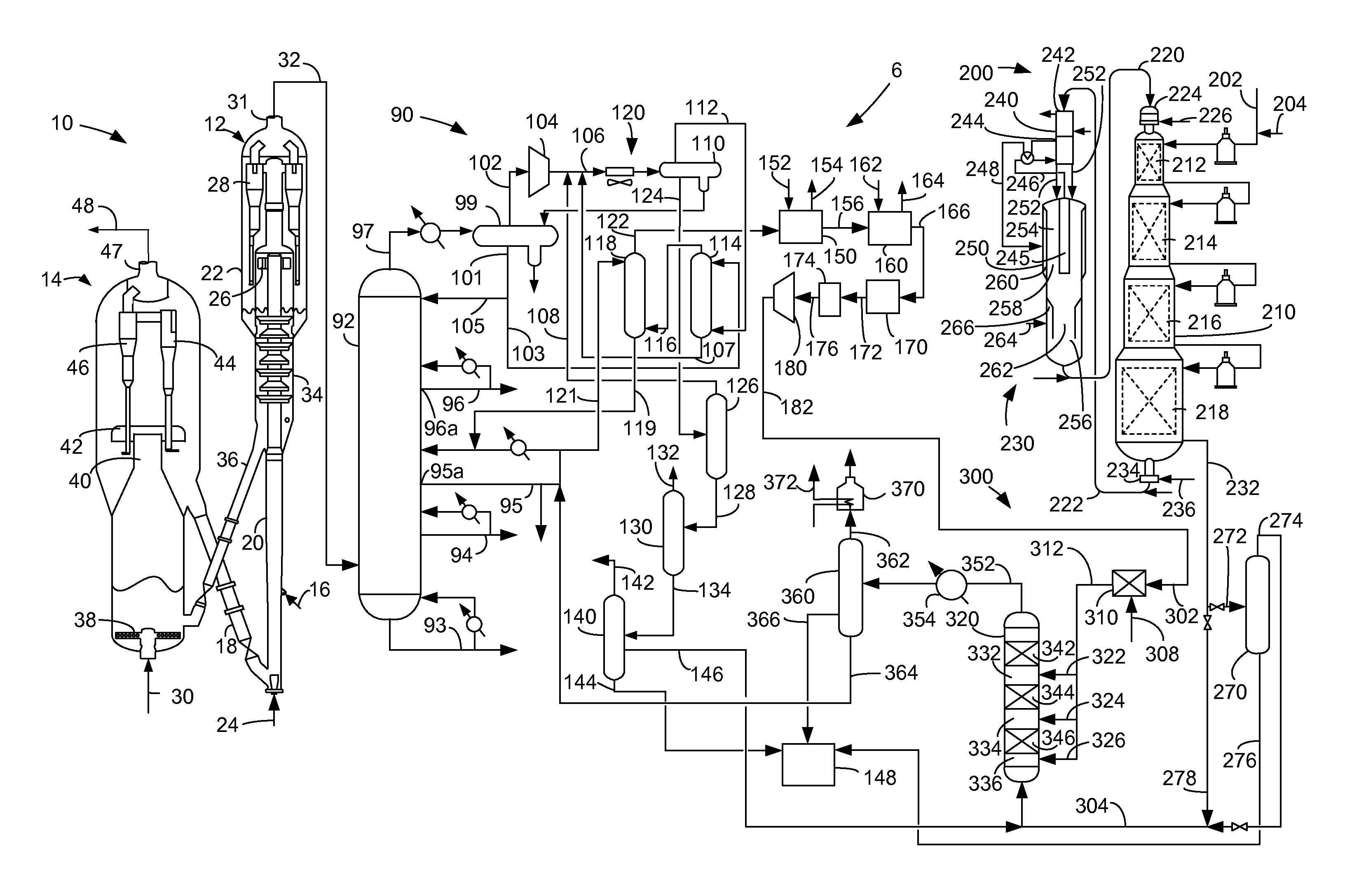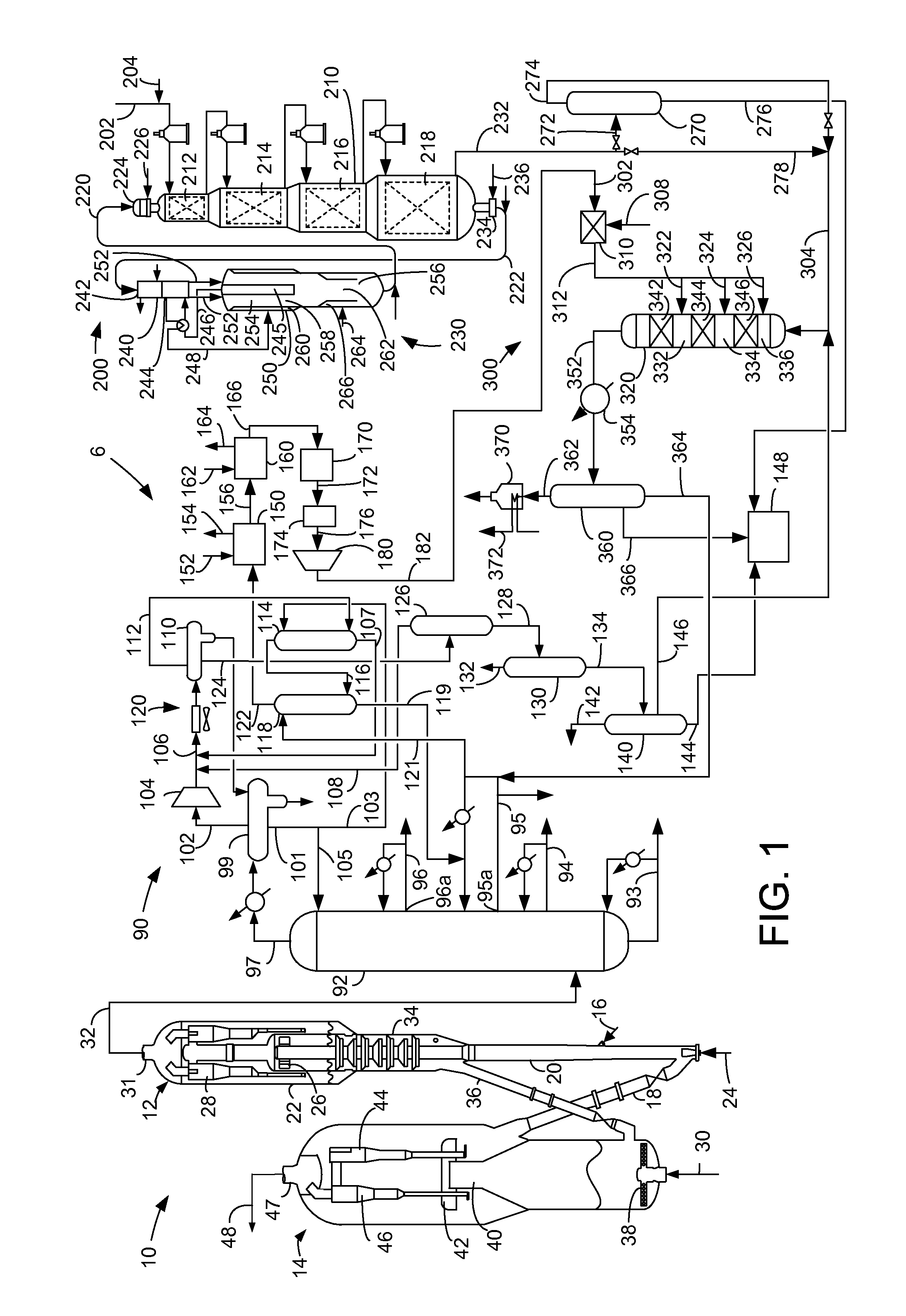Apparatus for the reduction of gasoline benzene content by alkylation with dilute ethylene
a technology of dilute ethylene and benzene, which is applied in the direction of lighting and heating apparatus, physical/chemical process catalysts, furnaces, etc., can solve the problems of reducing the liquid volume or octane value of the naphtha stream, the inability of gas recovery systems to economically justify ethylene recovery, and the increase in octane number reduces the liquid volume of the naphtha, so as to reduce the concentration of dilute benz
- Summary
- Abstract
- Description
- Claims
- Application Information
AI Technical Summary
Benefits of technology
Problems solved by technology
Method used
Image
Examples
example 1
An extruded UZM-8 catalyst was synthesized by combining an UZM-8 powder with Si / Al ratio of 12, and pseudo-boehmite provided under the Catapal trademark. The pseudo-boehmite was peptized with nitric acid before mixture with the amorphous silica-alumina. The catalyst dough was extruded through 1.59 mm openings in a cylindrical die plate and broken into pieces prior to calcination at 550° C. The finished catalyst consisted of 70 wt-% UZM-8 and 30 wt-% alumina and had a surface area of 368 m2 / g.
example 2
The catalyst of Example 1 was tested for benzene alkylation at 205° C., 3447 kPa (500 psig), 0.4 OWHSV (olefin weight hourly space velocity) and a liquid feed WHSV of 4.9 in a fixed bed operation over 10 mL of catalyst. The gas feed consisted of 23 mol-% C2H4 and 77 mol-% CH4. The liquid feed consisted of 2.6 wt-% pentene, 6.4 wt-% C6H6, 30 wt-% n-heptane, 25 wt-% toluene, 18 wt-% aromatics having eight carbon atoms (C8 aromatics), and 19 wt-% aromatics having nine carbon atoms (C9 aromatics).
Of ethylene, 83% was converted, and 51% of benzene was converted. Toluene conversion was 49% while conversion of C8 and C9 aromatics was less than 20%. Selectivity to ethylbenzene was 5%, to ethyltoluenes was 25%, to diethylbenzenes was 6%, to other gasoline range compounds was 37% and to compounds boiling at greater than 225° C. was 27%.
After 13 hours, the temperature was increased to 236° C. At the 26 hour mark, the liquid feed WHSV was increased to 12.7. Under these conditions, the ethylene ...
example 3
The catalyst of Example 1 was tested for benzene alkylation at 205° C., 3447 kPa (500 psig), 0.8 OWHSV and a liquid feed WHSV of 7 in a fixed bed operation over 12 mL of catalyst. The gas feed consisted of 34 mol-% CH4, 23 mol-% C2H4, 14 mol-% C2H6, 13 mol-% H2, 13 mol-% N2, 2 mol-% CO2, 1 mol-% CO and 1 ppm H2S resembling a dry gas feed. The liquid feed consisted of 39 wt-% benzene, 49 wt-% n-heptane and 12 wt-% toluene. Ethylene conversion ranged from 77% to 58% over 50 hours on stream with a constant 44% benzene conversion. Toluene conversion was 47%. Selectivity was 50-53% to ethylbenzene, 14-16% to ethyltoluenes, 17-19% to diethylbenzenes, 11-14% to other gasoline range compounds and 3% to compounds boiling at greater than 225° C. This experiment is shown in FIG. 3.
PUM
| Property | Measurement | Unit |
|---|---|---|
| temperatures | aaaaa | aaaaa |
| pressure | aaaaa | aaaaa |
| pressure | aaaaa | aaaaa |
Abstract
Description
Claims
Application Information
 Login to View More
Login to View More - R&D
- Intellectual Property
- Life Sciences
- Materials
- Tech Scout
- Unparalleled Data Quality
- Higher Quality Content
- 60% Fewer Hallucinations
Browse by: Latest US Patents, China's latest patents, Technical Efficacy Thesaurus, Application Domain, Technology Topic, Popular Technical Reports.
© 2025 PatSnap. All rights reserved.Legal|Privacy policy|Modern Slavery Act Transparency Statement|Sitemap|About US| Contact US: help@patsnap.com



